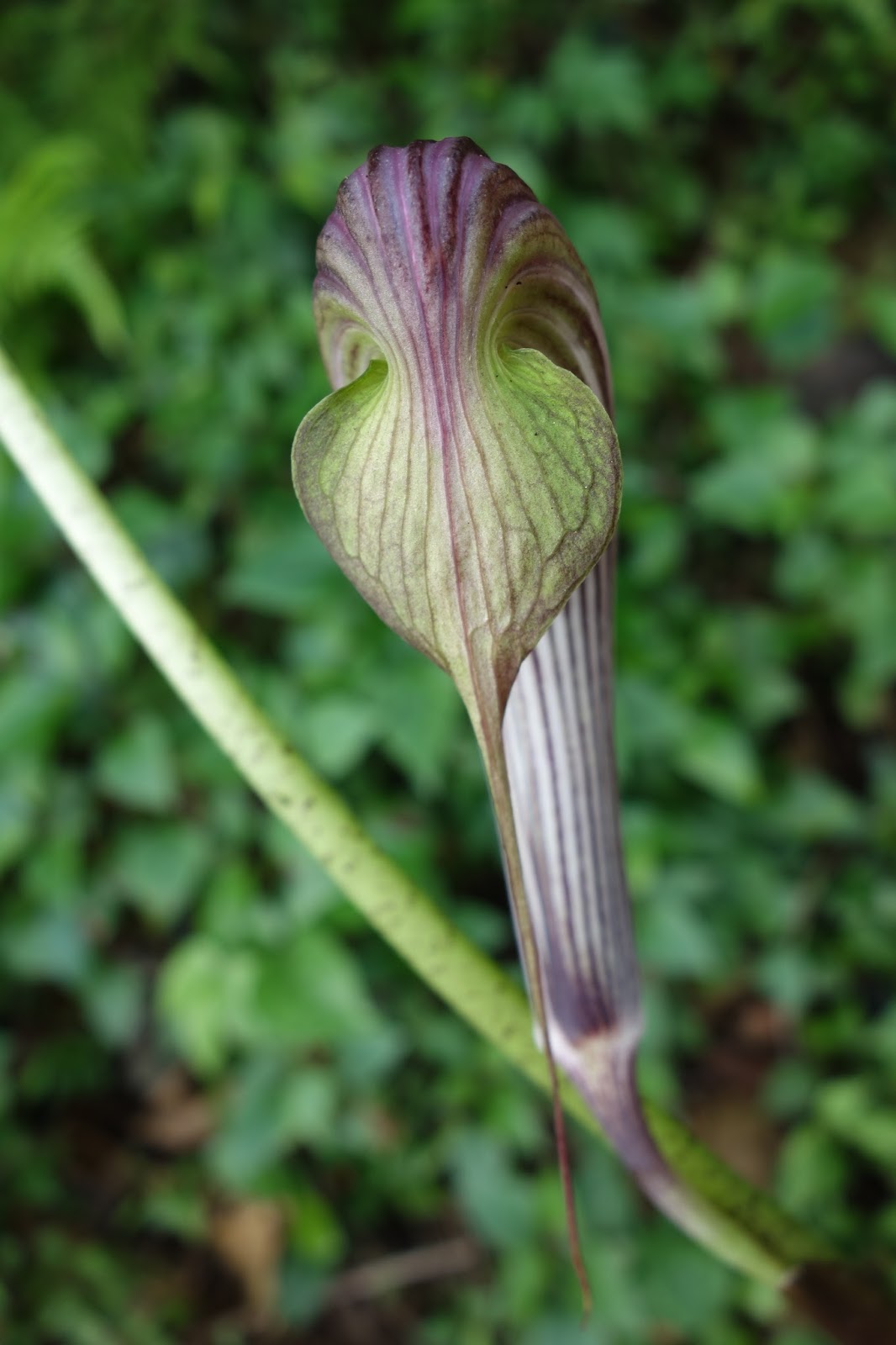Arisaema sarracenioides Barnes & C.E.C. Fisch
Description: Dioecious,
perennial herbs, to 60 cm tall. Corms
subterranean, depressed globose or subglobose, 2–2.5 × 3–4 cm, green-brownish,
wrinkled, cream inside. Roots many,
on top of the corm surrounding the pseudostem. whitish, 2–7 cm long. Pseudostem 30–45 cm long, cylindrical,
green with purple spots, ligule not prominent. Cataphylls 3, last one usually degraded. Leaf single, radiatisect; petiole
20–35 cm long, 0.5–2 cm thick, pale green; leaflets 7–9, leaflets petiolulate,
gradually cuneate at base, lamina obovate-spathulate, 15–30 × 2.5–5cm,
acuminate at apex, margins wavy, purple coloured lenticelled; leaflets bright
green above, pale beneath, lateral veins up to 22 pairs, intra-marginal vein
c.0.5 cm apart from the margins. Inflorescence
dioecious, probably emerging after the leaf; peduncle to 18 cm long, 0.5–0.7 cm thick, mottled as in petiole,
pale purple towards the distal end, exserted by 6–15 cm from the pseudostem. Spathe 12–18 cm long excluding
the limb portion; tube of spathe cylindric, funnel-shaped towards the mouth, a
small bend in the mid of spathe, 8–9 cm long,
pale to purple basally, greenish distally, dark purplish within, with
white longitudinal stripes along the veins; mouth enclosed by a lid like limb followed by 10-14
cm long tail; resemble a pitcher leaf, limb green to purple. Male spadix sessile,
8–9 cm long, slender, terete, base slightly thickened, c.0.3–0.5 cm wide,
gradually tapering and form a appendage above, white coloured with purple
molting. Neuters absent. Male flowers sessile or shortly
stipitate towards the distal end of the fertile zone, each consisting of 2–8purple
anthers; stipe to 1 mm long; anthers reniform, 0.6–0.8 × 0.5–0.7 mm, dehiscing
through an apical slit. female spadix
with basal portion cylindrical, ca. 2.2 3 0.8 cm, densely flowered; ovaries green,
1-loculed, ovoid; stigmas subsessile, discoid. Fruiting spadix cylindrical.
Etymology:
The
specific epithet “sarracenioides” refers to the plant
being similar to the appearance of Sarracenia, a genus of North American
pitcher plants.
Habitat and Distribution: Arisaema
sarracenioides is a strict endemic plant to the southern Western Ghats.Grown in rain forests of Idukki, Kollam.


Beautiful
ReplyDelete